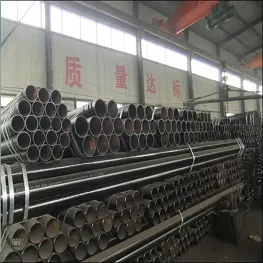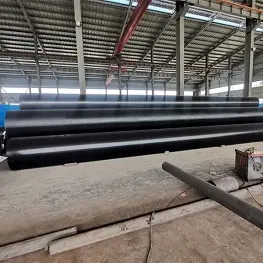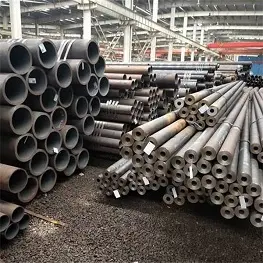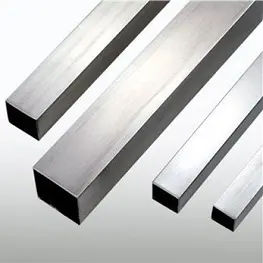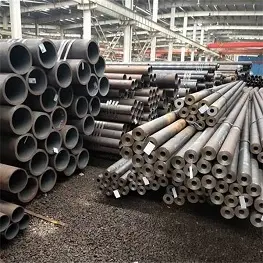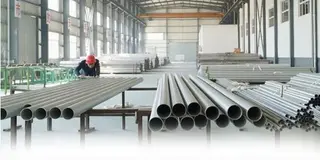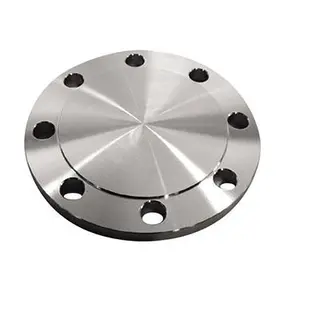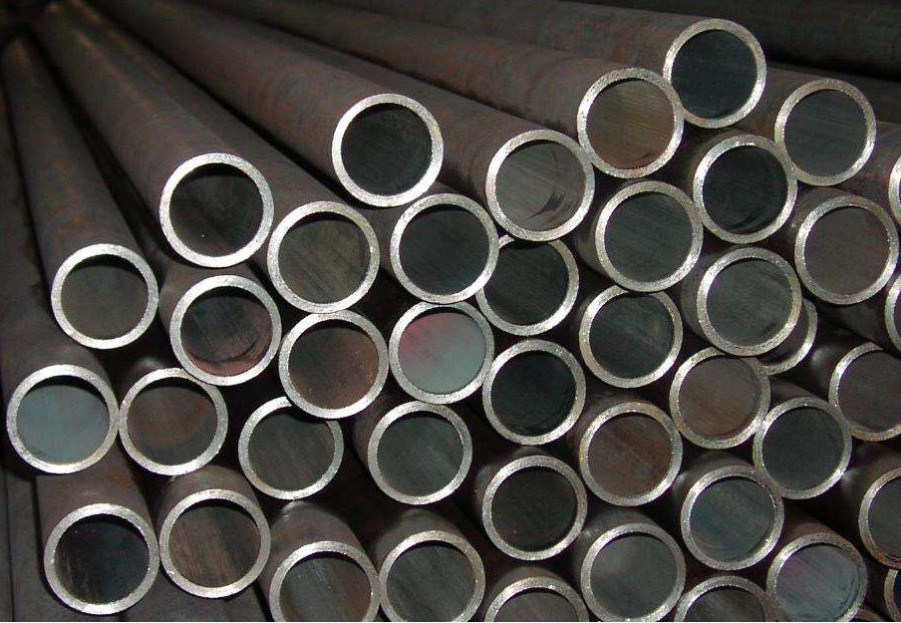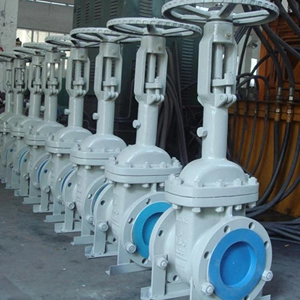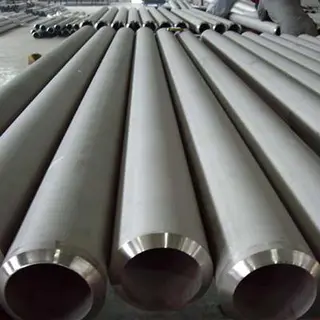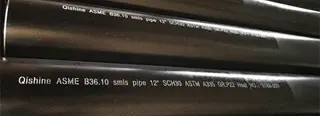The Surface Treatment Process of 16mn Seamless Pipes
With the continuous development of China's economy, China vigorously develops the energy industry. 16mn seamless pipes is an important way to ensure engineering security. In the process of the anti-corrosion construction of 16mn seamless pipes, the surface treatment of 16mn seamless pipes is one of the key factors to determine the service life of 16mn seamless pipes. It is the premise of anti-corrosion layer and 16mn seamless pipes can firmly combine. After the verification by research institutions, the life of the coating depends on the quality of coating types, coating and construction environment factors, such as the surface treatment effects of 16mn seamless pipes on coating life accounted for about 50%. Therefore, it should be in strict accordance with the coating specification requirements on the surface of 16mn seamless pipes. We should continuously explore and summarize to improve the steel pipe surface treatment.
1. Cleaning
The use of solvent and emulsion cleaning 16mn seamless pipes surface can achieve the removal of oil, grease, dust, lubricants and similar organic matters. However, it can not remove the surface rust, oxide scale and flux of 16mn seamless pipes. Therefore, it is only an auxiliary means in anti-corrosion production.
2. The tool of rust removal
The main use of steel wire brush and other tools can polish the steel surface. It can remove loose or warped oxide, rust, welding slag and so on. The manual tool derusting can reach Sa2 level. The power tool derusting can reach Sa3 level. If the surface of 16mn seamless pipes is attached to a firm oxide sheet, the tool derusting effect is not ideal. It can not reach the anchor depth required by anti-corrosion construction.
3. Pickling
Generally, chemical and electrolytic methods are used to do pickling treatment. Chemical pickling is only used for pipeline anticorrosion, which can remove oxide scale, rust and old coating. It can sometimes be used as a treatment after sandblasting and rust removal. Although chemical cleaning can achieve a certain cleanliness and roughness of the surface, its anchor lines are shallow, and it is easy to pollute the environment.
4. Spray (cast) shooting rust removal
Spray (cast) shot derusting spray is driven by high-power motor (cast) shooting high-speed rotating blades, making steel grit, steel shot, segment, minerals and other abrasive wire under the action of centrifugal force of the surface spraying (cast) processing of 16mn seamless pipes. It not only can thoroughly remove rust, oxides, dirt, and steel pipe under the action of abrasive violent impact and friction. It can also achieve the desired uniform roughness.
After spraying, not only the physical absorption on the surface of the pipe can be expanded, but also the mechanical adhesion between the anticorrosive layer and the pipe surface can be enhanced. Therefore, jet lag is an ideal way to remove rust. Generally speaking, the shot peening (sand) rust removal is mainly used for the inner surface of the pipe, shot blasting (sand) rust removal is mainly used for the outer surface of the pipe. Several problems should be paid attention to when using spray to remove rust.
4.1 Derusting grades
For the construction process of epoxy, vinyl, phenolic and other anti-corrosive coatings commonly used in 16mn seamless pipes, the general requirement is that the surface of 16mn seamless pipes reaches nearly white grade (Sa2.5). It is proved by practice that this derusting grade can remove almost all the oxide scales, rust, other dirt, and the depth of anchor grain reaches 40~100μm, which fully meets the adhesion requirements of the anticorrosion layer and 16mn seamless pipes. The spray ordering process can achieve the near-white grade (Sa2.5) technical conditions with low operating cost, stable and reliable quality.
4.2 The spray (cast) abrasives
In order to achieve the ideal derusting effect, the abrasive should be selected according to the hardness of the surface of 16mn seamless pipes, the degree of original rust, the required surface roughness, coating type, etc. For the single-layer epoxy, two or three layers of polyethylene coating, the mixed abrasive of steel sand and steel shot is easier to achieve the ideal derusting effect. The steel shot has the function of strengthening steel surface, while the steel sand has the function of etching steel surface. A mixed abrasive of sand and shot (usually 40~50HRC of shot and 50~60HRC of sand) can be used on a variety of steel surfaces, even on grade C and D corroded steel surfaces.
4.3 The particle size and ratio of abrasives
In order to obtain better uniform cleanliness and roughness distribution, the design of abrasive particle size and proportion is very important. Too large roughness easily causes corrosion coating at the peak of the anchor line thinning. At the same time, because the anchor lines are too deep, the anti-corrosion layer is easy to form bubbles in the process of anti-corrosion, which seriously affects the performance of the anti-corrosion layer.
Too small roughness will decrease the adhesion and impact strength of the coating. For serious internal pitting, it can not only rely on the high-strength impact of large particles abrasive, but also must rely on small particles to polish off the corrosion products to achieve the cleaning effect. At the same time, a reasonable proportion design can not only slow down the wear of abrasive on pipes and nozzles (blades), but also greatly improve the utilization rate of abrasive. Generally, the particle size of steel shot is 0.8~1.3mm, and the particle size of steel sand is 0.4~1.0mm, of which 0.5~1.0mm is the main component. The ratio of sand shots is generally 5~8.
It should be noted that in practice, the ideal ratio of sand and shot in abrasives is difficult to achieve, because hard and fragile sands have a higher breakage rate than that of shots. Therefore, we should continue to sample detection of mixed abrasives in the operation. According to particle size distribution, the derusting machine is mixed with new abrasives. The main abrasives are the numbers of steel sand.
4.4 The derusting speed
The decreased speed of 16mn seamless pipes depends on the type of abrasives and the displacement of abrasives. Generally, the abrasives with a lower loss rate should be selected, which is conducive to improving the cleaning speed and the life of long blades.
4.5 Cleaning and preheating
Before spraying, the oil and scale on the surface of the steel pipes are removed by cleaning method. The pipe body is preheated to 40-60 ℃ by heating the furnace, so that the surface of the 16mn seamless pipes is kept dry. Because the surface of the steel pipe does not contain grease and other dirt, it can enhance the effect of rust removal in the process of spraying (cast). The dry surface of the steel pipe is also conducive to the separation of the steel shot, steel sand and rust and oxide scale, so that the surface of the steel pipe is cleaner after rust removal.
The importance of surface treatment in production should be paid attention to. We should strictly control the process parameters of derusting. In the actual construction, the peel strength value of the anti-corrosion layer of 16mn seamless pipes greatly exceeds the standard requirements in order to ensure the quality of the anti-corrosion layer. On the basis of the same equipment, it greatly improves the process level and reduces the production cost.
1. Cleaning
The use of solvent and emulsion cleaning 16mn seamless pipes surface can achieve the removal of oil, grease, dust, lubricants and similar organic matters. However, it can not remove the surface rust, oxide scale and flux of 16mn seamless pipes. Therefore, it is only an auxiliary means in anti-corrosion production.
2. The tool of rust removal
The main use of steel wire brush and other tools can polish the steel surface. It can remove loose or warped oxide, rust, welding slag and so on. The manual tool derusting can reach Sa2 level. The power tool derusting can reach Sa3 level. If the surface of 16mn seamless pipes is attached to a firm oxide sheet, the tool derusting effect is not ideal. It can not reach the anchor depth required by anti-corrosion construction.
3. Pickling
Generally, chemical and electrolytic methods are used to do pickling treatment. Chemical pickling is only used for pipeline anticorrosion, which can remove oxide scale, rust and old coating. It can sometimes be used as a treatment after sandblasting and rust removal. Although chemical cleaning can achieve a certain cleanliness and roughness of the surface, its anchor lines are shallow, and it is easy to pollute the environment.
4. Spray (cast) shooting rust removal
Spray (cast) shot derusting spray is driven by high-power motor (cast) shooting high-speed rotating blades, making steel grit, steel shot, segment, minerals and other abrasive wire under the action of centrifugal force of the surface spraying (cast) processing of 16mn seamless pipes. It not only can thoroughly remove rust, oxides, dirt, and steel pipe under the action of abrasive violent impact and friction. It can also achieve the desired uniform roughness.
After spraying, not only the physical absorption on the surface of the pipe can be expanded, but also the mechanical adhesion between the anticorrosive layer and the pipe surface can be enhanced. Therefore, jet lag is an ideal way to remove rust. Generally speaking, the shot peening (sand) rust removal is mainly used for the inner surface of the pipe, shot blasting (sand) rust removal is mainly used for the outer surface of the pipe. Several problems should be paid attention to when using spray to remove rust.
4.1 Derusting grades
For the construction process of epoxy, vinyl, phenolic and other anti-corrosive coatings commonly used in 16mn seamless pipes, the general requirement is that the surface of 16mn seamless pipes reaches nearly white grade (Sa2.5). It is proved by practice that this derusting grade can remove almost all the oxide scales, rust, other dirt, and the depth of anchor grain reaches 40~100μm, which fully meets the adhesion requirements of the anticorrosion layer and 16mn seamless pipes. The spray ordering process can achieve the near-white grade (Sa2.5) technical conditions with low operating cost, stable and reliable quality.
4.2 The spray (cast) abrasives
In order to achieve the ideal derusting effect, the abrasive should be selected according to the hardness of the surface of 16mn seamless pipes, the degree of original rust, the required surface roughness, coating type, etc. For the single-layer epoxy, two or three layers of polyethylene coating, the mixed abrasive of steel sand and steel shot is easier to achieve the ideal derusting effect. The steel shot has the function of strengthening steel surface, while the steel sand has the function of etching steel surface. A mixed abrasive of sand and shot (usually 40~50HRC of shot and 50~60HRC of sand) can be used on a variety of steel surfaces, even on grade C and D corroded steel surfaces.
4.3 The particle size and ratio of abrasives
In order to obtain better uniform cleanliness and roughness distribution, the design of abrasive particle size and proportion is very important. Too large roughness easily causes corrosion coating at the peak of the anchor line thinning. At the same time, because the anchor lines are too deep, the anti-corrosion layer is easy to form bubbles in the process of anti-corrosion, which seriously affects the performance of the anti-corrosion layer.
Too small roughness will decrease the adhesion and impact strength of the coating. For serious internal pitting, it can not only rely on the high-strength impact of large particles abrasive, but also must rely on small particles to polish off the corrosion products to achieve the cleaning effect. At the same time, a reasonable proportion design can not only slow down the wear of abrasive on pipes and nozzles (blades), but also greatly improve the utilization rate of abrasive. Generally, the particle size of steel shot is 0.8~1.3mm, and the particle size of steel sand is 0.4~1.0mm, of which 0.5~1.0mm is the main component. The ratio of sand shots is generally 5~8.
It should be noted that in practice, the ideal ratio of sand and shot in abrasives is difficult to achieve, because hard and fragile sands have a higher breakage rate than that of shots. Therefore, we should continue to sample detection of mixed abrasives in the operation. According to particle size distribution, the derusting machine is mixed with new abrasives. The main abrasives are the numbers of steel sand.
4.4 The derusting speed
The decreased speed of 16mn seamless pipes depends on the type of abrasives and the displacement of abrasives. Generally, the abrasives with a lower loss rate should be selected, which is conducive to improving the cleaning speed and the life of long blades.
4.5 Cleaning and preheating
Before spraying, the oil and scale on the surface of the steel pipes are removed by cleaning method. The pipe body is preheated to 40-60 ℃ by heating the furnace, so that the surface of the 16mn seamless pipes is kept dry. Because the surface of the steel pipe does not contain grease and other dirt, it can enhance the effect of rust removal in the process of spraying (cast). The dry surface of the steel pipe is also conducive to the separation of the steel shot, steel sand and rust and oxide scale, so that the surface of the steel pipe is cleaner after rust removal.
The importance of surface treatment in production should be paid attention to. We should strictly control the process parameters of derusting. In the actual construction, the peel strength value of the anti-corrosion layer of 16mn seamless pipes greatly exceeds the standard requirements in order to ensure the quality of the anti-corrosion layer. On the basis of the same equipment, it greatly improves the process level and reduces the production cost.
Send your message to this supplier
Related Articles from the Supplier
The Surface Treatment Process of 16mn Seamless Pipes
- Dec 18, 2021
The Heat Treatment Process of Cold Drawn Steel Pipes
- Oct 17, 2021
Process Treatment of Q355B Seamless Steel Pipes
- Jan 24, 2021
Related Articles from China Manufacturers
The Heat Treatment Process of Steel Pipes
- Jul 05, 2017
Process Flow of 16Mn Alloy Steel Pipes
- Jun 19, 2020
The production process of blind flanges
- Dec 07, 2018
Process Flow of 16Mn Alloy Steel Pipes
- Jul 19, 2022
Related Products Mentioned in the Article
- www.chinatopper.com
- Address: Xiamen
- Phone: 86-592-5819200
- Business Type: Trading, Industry & Trading, Manufacturer,
Supplier Website
Source: https://www.pipessteel.com/news/the-surface-treatment-process-of-16mn-seamless-pipes.html

